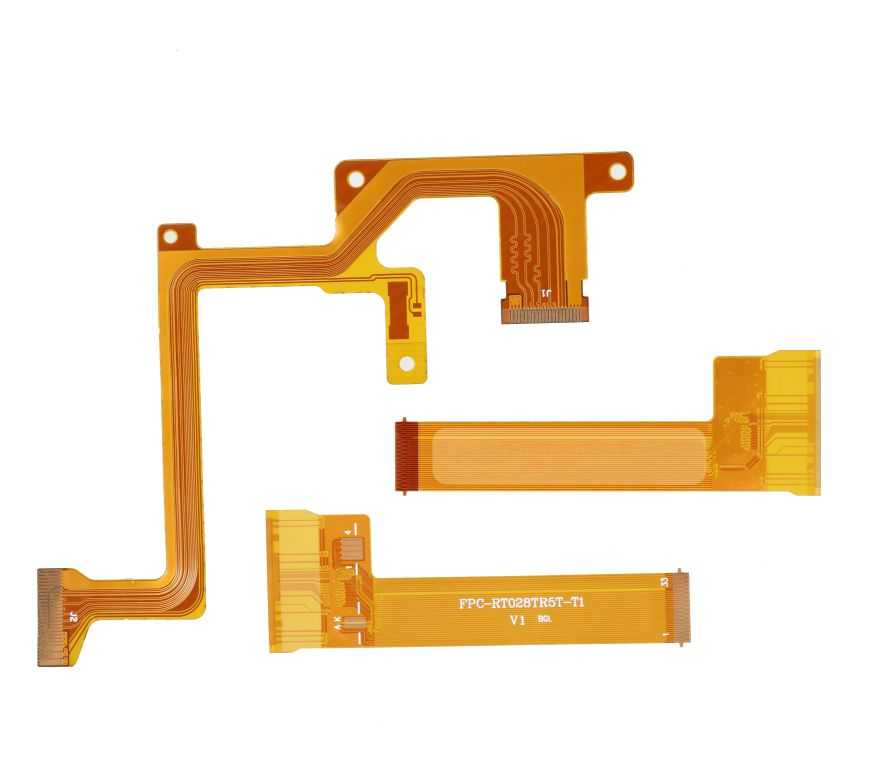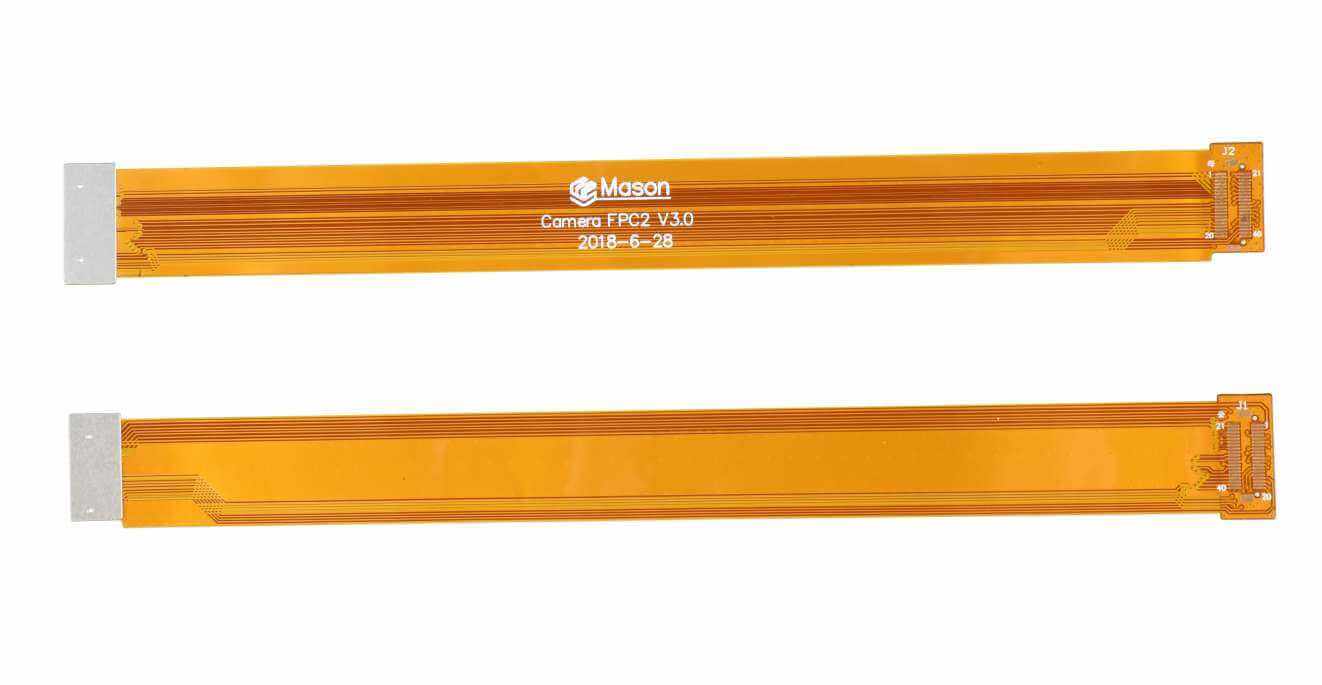- +86-755-23012705
- Building 3, Jinfeng Industrial Park, Fuyong Street, Baoan District, Shenzhen ,China
- [email protected]
Menu
(1) FPC electroplating pre-treatment The copper conductor surface exposed by the FPC after the coating process may be contaminated with adhesive or ink, and there may also be oxidation and discoloration due to high-temperature processes. If you want to obtain additional A well-focused compact coating must remove the contamination and oxide layer on the conductor surface to make the conductor surface clean. However, some of these pollutions are very firmly combined with copper conductors and cannot be completely removed with weak cleaning agents. Therefore, most of them are often treated with a certain strength of alkaline polishing agent and brushing. Most of the coating adhesives are It is epoxy resin and has poor alkali resistance. This will lead to a decrease in bonding strength, although it will not be obvious. However, in the FPC electroplating process, the plating solution may penetrate from the edge of the cover layer, and it will cover Layer peeling. In the final soldering, there is a phenomenon that the solder gets under the covering layer. It can be said that the pre-treatment cleaning process will have a significant impact on the basic characteristics of the flexible printed circuit board FPC, and full attention must be paid to the processing conditions.

(2)Thickness of FPC electroplating During electroplating, the deposition speed of the electroplated metal is directly related to the electric field intensity, and the electric field intensity changes with the shape of the circuit pattern and the position relationship of the electrode. Generally, the thinner the line width of the wire, the terminal of the terminal The sharper, the closer the distance from the electrode, the greater the electric field strength, and the thicker the coating at this part. In applications related to flexible printed boards, there is a situation where the width of many wires in the same circuit is very different, which makes it easier to produce uneven plating thickness. In order to prevent this from happening, a shunt cathode pattern can be attached around the circuit. , Absorb the uneven current distributed on the electroplating pattern, and ensure the uniform thickness of the coating on all parts to the greatest extent. Therefore, efforts must be made in the structure of the electrode. Here is a compromise solution. The standards for parts that require high coating thickness uniformity are strict, while the standards for other parts are relatively relaxed, such as lead-tin plating for fusion welding, and gold plating for metal wire overlap (welding). High, and for lead-tin plating for general anti-corrosion purposes, the plating thickness requirements are relatively relaxed.
3) The stains and dirt of FPC electroplating. The state of the plating layer that has just been electroplated, especially the appearance, is not a problem, but soon there will be stains, dirt, discoloration, etc. on the surface, especially the factory inspection did not find anything It was different, but when the user checked the reception, it was found that there was an appearance problem. This is caused by insufficient drifting and the remaining plating solution on the surface of the plating layer, which is caused by the slow chemical reaction over a period of time. In particular, flexible printed boards are not very flat due to their softness. Various solutions are prone to “accumulate?” in the recesses, which will then react and change color in this part. In order to prevent this, not only must be fully drifted, but also It is also necessary to carry out sufficient drying treatment. The high temperature thermal aging test can confirm whether the drift is sufficient.
When the line conductor to be plated is isolated and cannot be used as an electrode, only electroless plating can be performed. Generally, the plating solution used in electroless plating has a strong chemical effect, and the electroless gold plating process is a typical example. The electroless gold plating solution is an alkaline aqueous solution with a very high pH. When using this kind of electroplating process, it is easy for the plating solution to drill under the covering layer, especially if the quality of the covering film lamination process is not strict and the bonding strength is low, this problem is more likely to occur.
Due to the characteristics of the plating solution, the electroless plating of the displacement reaction is more prone to the phenomenon that the plating solution penetrates under the covering layer. It is difficult to obtain ideal plating conditions with this process.

HASL was originally a technology developed for the rigid printed board coating with lead and tin. Because this technology is simple, it has also been applied to the flexible printed board FPC. Hot air leveling is to directly immerse the board in the molten lead-tin bath vertically and blow the excess solder with hot air. This condition is very harsh for the flexible printed board FPC. If the flexible printed board FPC cannot be immersed in the solder without any measures, the flexible printed board FPC must be clamped to the screen made of titanium steel In the middle, it is immersed in molten solder. Of course, the surface of the flexible printed board FPC must be cleaned and coated with flux in advance. Due to the harsh conditions of the hot air leveling process, it is easy for the solder to drill from the end of the cover layer to under the cover layer. This phenomenon is more likely to happen frequently when the bonding strength between the cover layer and the copper foil surface is low. Since polyimide film is easy to absorb moisture, when using hot air leveling process, the moisture absorbed by the hot air will evaporate rapidly and cause the cover layer to bubble or even peel off. Therefore, before FPC hot air leveling, it must be dried and moisture-proof Governance.
We are ready to provide professional & reliable flexible printed circuit board fabrication or assembly service for you right now. Capability up to 12 layer, PI (PoIyimide), LCP (Liquid Crystal Polymer) material available, comply with Standard IPC II, IPC III. Capable of below techniques: Peelable solder mask, Gold fingers, Copper Filled Plating, EMI SHIELDING (Silver Ink, Silver Film), Stiffener (PI / FR-4 / SUS material) , ENIG – RoHS, ENEPIG (Electroless Nickel Electroless , Palladium Immersion Gold, Soft bonding), OSP – RoHS. To get started, click below button to contact our project specialist for you.






XPCB Limited is a premium PCB & PCBA manufacturer based in China.
We specialize in multilayer flexible circuits, rigid-flex PCB, HDI PCB, and Rogers PCB.
Quick-turn PCB prototyping is our specialty. Demanding project is our advantage.
Tel : +86-136-3163-3671
Fax : +86-755-2301 2705
Email : [email protected]
© 2023 - XPCB Limited All Right Reserve
